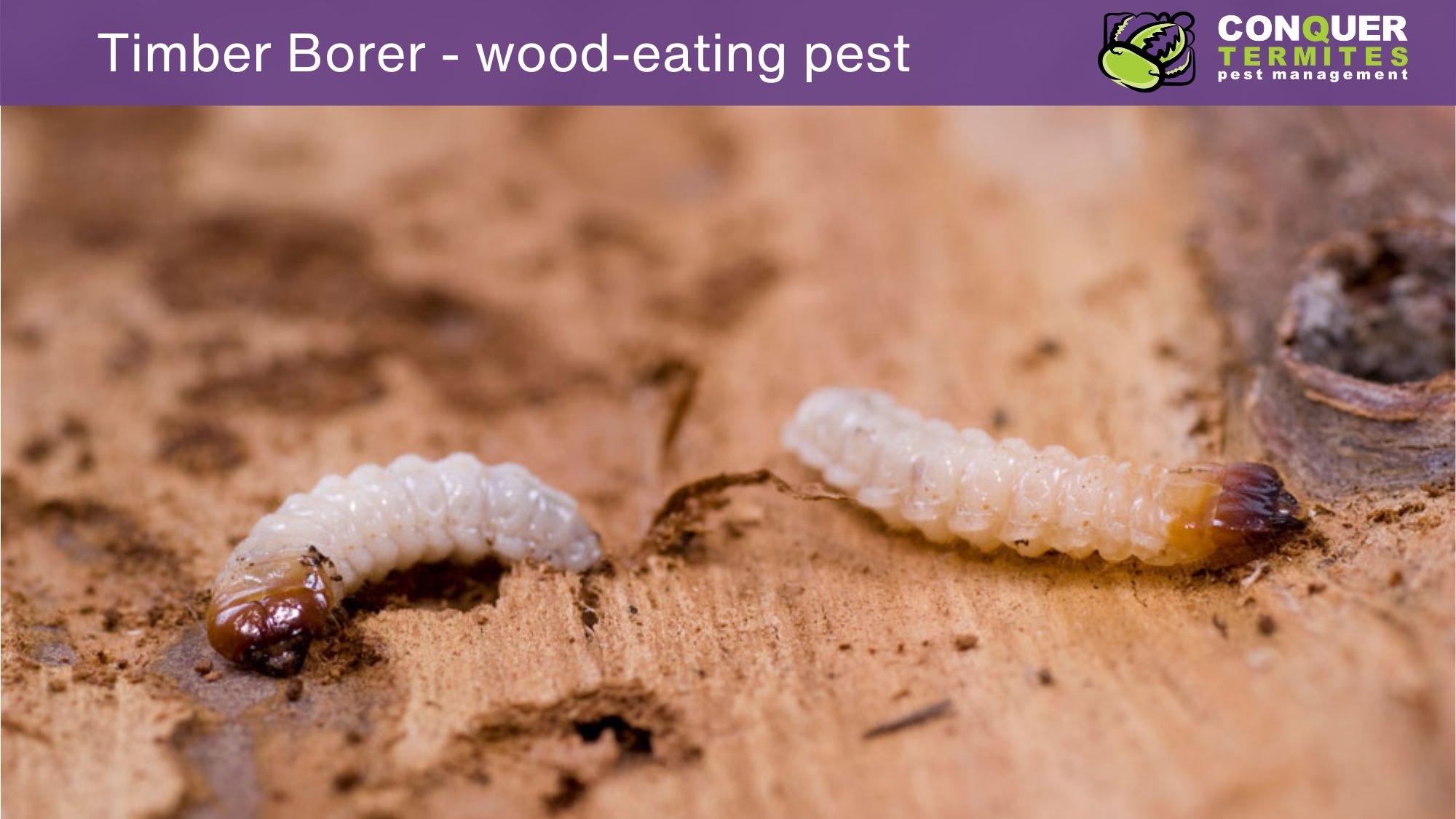Queensland’s wet weather has invited a slew of timber-loving pests into our homes and gardens. The heat and humidity have created ideal conditions for these unwelcome visitors, increasing the presence of these pests.
In this article, we’ll explore what Borers are, how to identify their presence, the damage they can cause, and effective ways to deal with them.
What are Borers? Borers, also known as Woodworms, are beetles with a penchant for wood. These insects are most active during their larval stage when they cause damage to timber structures. They often leave distinctive signs of their presence, primarily in the form of “insect frass,” which is the waste they leave behind.
Identifying Borers: Detecting borers can be crucial in safeguarding your home and garden. Look out for telltale signs such as soft wood, tiny pellets, or small holes in wooden surfaces. Borers share similarities with termites in that they both target timber, like Subterranean Termites, Borers will target timbers above the ground such as old tree stumps, veranda posts and retaining walls.
In Australia, several common types of borers can pose a threat to timber structures and require vigilant attention. Let’s explore these borers individually:
Pinhole Borer: Pinhole borers are opportunistic insects that cannot thrive in dry timber. They tend to exit the wood before construction begins, leaving behind identifiable “flight holes.” Although relatively less destructive than other species, they still require monitoring due to their potential to weaken wood structures.
Powder Post Beetle (Lyctus Borer): The Lyctus Borer, also known as the Powder Post Beetle, specifically targets the sapwood of susceptible hardwood timber. Sapwood, found on the outer layers of the tree, is often used for decorative timbers like skirting boards and trims. Within a few years of a house’s construction, these timbers may become infested with Lyctids, identifiable by their 2mm holes and the accumulation of flour-like dust. While not typically a structural concern, Lyctid infestations are unsightly and may necessitate the replacement of affected timber.

Anobiid Borer: Anobiid borers pose a more serious threat, primarily attacking softwoods, particularly pine varieties. These borers tend to tunnel along the grain of the wood, creating 2mm pinholes and leaving behind significant quantities of loose, gritty dust with a texture resembling fine table salt. Their persistent feeding habits can extend over years, posing a structural risk. Be cautious when introducing second-hand or antique furniture and old floorboards into your home, as they may harbor Anobiid infestations. Proper examination and potential chemical treatment may be necessary.
European House Beetle: Originating in Europe, the European House Beetle has spread worldwide and prefers new softwoods, especially pine. Only the larvae feed on wood, taking several years, often up to three decades, to mature depending on wood moisture and environmental conditions. During this time, they can cause damage to the wood. Mature adults eventually exit the wood by creating large oval-shaped exit holes.
Understanding the Damage: Borers can wreak havoc on wood over time. There are different types of borers, including pinhole-style borers that prefer modern timbers and powderpost beetles often found outdoors. Some borers specifically target aged timbers, typically those in service for around 20 years.
If left untreated, wood borers can continue to eat through the grain of timber, causing it to weaken and become spongier. Eventually, the wood may lose its structural integrity and ability to bear weight.
Dealing with Borers: Preventing borers in your garden can be challenging, but there are steps you can take. Protective coatings or paints can be applied to outdoor timber, such as fences and play equipment, to deter borers from infesting them.
If borers are already present, your approach should depend on their location and the materials they are attacking. In many cases, especially with floorboards, it may be more cost-effective to remove and replace the infested wood. Be sure to inspect adjacent areas to ensure there are no signs of pest activity.
In conclusion, while timber-loving borers may be an unwelcome guest in your home or garden, early detection and proactive measures can help you address the issue effectively. Don’t let these pests compromise the integrity of your wooden structures; take action to protect your valuable assets.




